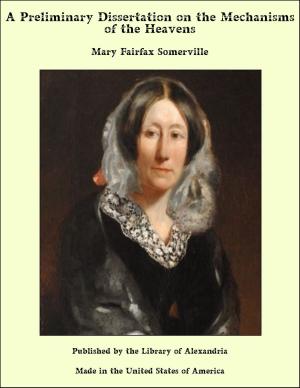Gleaings in Buddha-Fields
Nonfiction, Religion & Spirituality, New Age, History, Fiction & Literature| Author: | Lafcadio Hearn | ISBN: | 9781465538451 |
| Publisher: | Library of Alexandria | Publication: | March 8, 2015 |
| Imprint: | Language: | English |
| Author: | Lafcadio Hearn |
| ISBN: | 9781465538451 |
| Publisher: | Library of Alexandria |
| Publication: | March 8, 2015 |
| Imprint: | |
| Language: | English |
A LIVING GOD OF whatever dimension, the temples or shrines of pure Shinto are all built in the same archaic style. The typical shrine is a windowless oblong building of unpainted timber, with a very steep overhanging roof; the front is the gable end; and the upper part of the perpetually closed doors is wooden latticework,—usually a grating of bars closely set and crossing each Other at right angles. In most cases the structure is raised slightly above the ground on wooden pillars; and the queer peaked facade, with its visor-like apertures and the fantastic projections of beam-work above its gable-angle, might remind the European traveler of certain old Gothic forms of dormer. There is no artificial color. The plain wood soon turns, under the action of rain and sun, to a natural grey, varying according to surface exposure from the silvery tone of birch bark to the sombre grey of basalt. So shaped and so tinted, the isolated country yashiro may seem less like a work of joinery than a feature of the scenery,—a rural form related to nature as closely as rocks and trees,—a something that came into existence only as a manifestation of Ohotsuchi-no-Kami, the Earth-god, the primeval divinity of the land. Why certain architectural forms produce in the beholder a feeling of weirdness is a question about which I should like to theorize some day: at present I shall venture only to say that Shinto shrines evoke such a feeling. It grows with familiarity instead of weakening; and a knowledge of popular beliefs is apt to intensify it. We have no English words by which these queer shapes can be sufficiently described,—much less any language able to communicate the peculiar impression which they make. Those Shinto terms which we loosely render by the words “temple” and “shrine” are really Usually hinoki (Chamaecyparis obtusa).] untranslatable;—I mean that the Japanese ideas attaching to them cannot be conveyed by translation. The so-called “august house” of the Kami is not so much a temple, in the classic meaning of the term, as it is a haunted room, a spirit-chamber, a ghost-house; many of the lesser divinities being veritably ghosts,—ghosts of great warriors and heroes and rulers and teachers, who lived and loved and died hundreds or thousands of years ago.
A LIVING GOD OF whatever dimension, the temples or shrines of pure Shinto are all built in the same archaic style. The typical shrine is a windowless oblong building of unpainted timber, with a very steep overhanging roof; the front is the gable end; and the upper part of the perpetually closed doors is wooden latticework,—usually a grating of bars closely set and crossing each Other at right angles. In most cases the structure is raised slightly above the ground on wooden pillars; and the queer peaked facade, with its visor-like apertures and the fantastic projections of beam-work above its gable-angle, might remind the European traveler of certain old Gothic forms of dormer. There is no artificial color. The plain wood soon turns, under the action of rain and sun, to a natural grey, varying according to surface exposure from the silvery tone of birch bark to the sombre grey of basalt. So shaped and so tinted, the isolated country yashiro may seem less like a work of joinery than a feature of the scenery,—a rural form related to nature as closely as rocks and trees,—a something that came into existence only as a manifestation of Ohotsuchi-no-Kami, the Earth-god, the primeval divinity of the land. Why certain architectural forms produce in the beholder a feeling of weirdness is a question about which I should like to theorize some day: at present I shall venture only to say that Shinto shrines evoke such a feeling. It grows with familiarity instead of weakening; and a knowledge of popular beliefs is apt to intensify it. We have no English words by which these queer shapes can be sufficiently described,—much less any language able to communicate the peculiar impression which they make. Those Shinto terms which we loosely render by the words “temple” and “shrine” are really Usually hinoki (Chamaecyparis obtusa).] untranslatable;—I mean that the Japanese ideas attaching to them cannot be conveyed by translation. The so-called “august house” of the Kami is not so much a temple, in the classic meaning of the term, as it is a haunted room, a spirit-chamber, a ghost-house; many of the lesser divinities being veritably ghosts,—ghosts of great warriors and heroes and rulers and teachers, who lived and loved and died hundreds or thousands of years ago.















